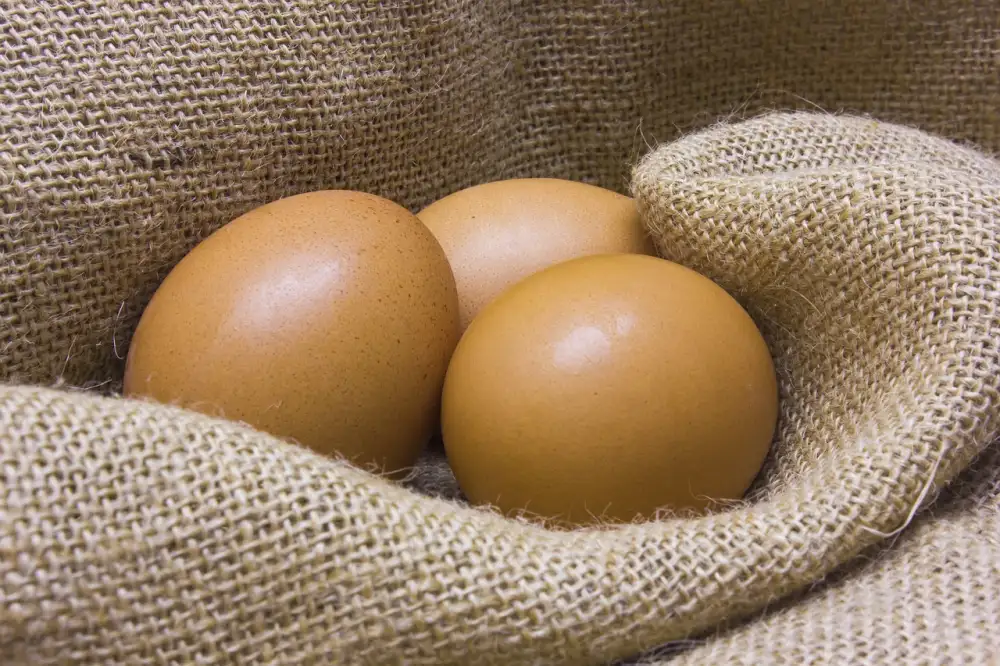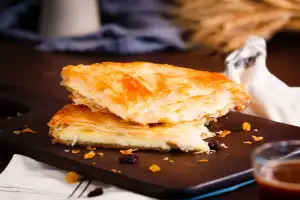Unveiling the Delectable Traditions: Exploring Passover Food and Flavors

- Matzah: The unleavened bread
- Traditional Seder plate items
- Charoset: A sweet and symbolic dish
- Bitter herbs: The significance of maror
- Gefilte fish: A beloved Passover delicacy
- Passover desserts: Flourless treats and delights
- Passover-friendly recipes for the main course
- Exploring regional variations in Passover cuisine
Passover, also known as Pesach, is a significant Jewish holiday that commemorates the liberation of the Israelites from slavery in ancient Egypt. It is a time for family gatherings, storytelling, and most importantly, enjoying delicious food. Passover food holds deep symbolic meaning and reflects the traditions and customs associated with this special occasion. From unleavened bread to traditional Seder plate items, Passover cuisine offers a unique culinary experience that is both rich in history and flavor. Join us on a journey as we delve into the delectable traditions of Passover food and explore its diverse flavors.
Matzah: The unleavened bread
Matzah, also known as unleavened bread, is a central element of Passover cuisine. It holds great significance in Jewish tradition and symbolizes the haste with which the Israelites left Egypt, not having enough time for their bread to rise. Matzah is made from flour and water, but it must be prepared quickly to prevent any leavening agents from being added. The result is a flat, crisp bread that is both simple and symbolic. Its texture and taste are distinct, reminding us of the humble origins of the Passover story. Matzah is often enjoyed on its own or used as a base for other Passover dishes throughout the holiday.
Traditional Seder plate items
Traditional Seder plate items hold a significant place in Passover celebrations. The Seder plate is an essential centerpiece during the Passover meal, symbolizing different elements of the Exodus story. It typically includes six items:
1. Zeroa: A roasted lamb shank bone represents the Paschal sacrifice offered in ancient times.
2. Beitzah: A hard-boiled egg symbolizes both mourning and rebirth.
3. Maror: Bitter herbs, such as horseradish, remind us of the bitterness of slavery.
4. Charoset: A mixture of chopped apples, nuts, wine, and spices represents the mortar used by Hebrew slaves to build Egyptian structures.
5. Karpas: A vegetable, often parsley or celery, dipped in saltwater signifies tears shed during enslavement.
6. Chazeret: Another bitter herb like romaine lettuce is included for those who follow certain Jewish customs.
These symbolic foods serve as a reminder of the hardships endured by the Israelites and their ultimate liberation from slavery. Each item on the Seder plate holds deep meaning and adds a layer of significance to the Passover celebration.
Charoset: A sweet and symbolic dish
Charoset is a sweet and symbolic dish that holds a special place on the Passover Seder plate. It represents the mortar used by the Israelites when they were enslaved in Egypt. The ingredients for charoset vary depending on cultural traditions, but it typically includes chopped apples, nuts, sweet wine, cinnamon, and honey. The mixture is often reminiscent of the texture of mortar and has a sweet taste that symbolizes the sweetness of freedom. Charoset serves as a reminder of the hardships endured by our ancestors and the importance of liberation. It is customary to eat charoset with matzah during the Seder meal, combining the flavors to create a meaningful culinary experience.
Bitter herbs: The significance of maror
Bitter herbs, known as maror in Hebrew, hold a significant place on the Passover Seder plate. These herbs symbolize the bitterness and harshness of slavery that the Jewish people endured in Egypt. Traditionally, horseradish is used as maror due to its strong and pungent flavor. The bitter taste serves as a reminder of the hardships faced by our ancestors. As we consume maror during the Seder, we are encouraged to reflect on the suffering of our forefathers and express gratitude for their liberation. It is a poignant reminder of the resilience and strength displayed by the Jewish community throughout history.
Gefilte fish: A beloved Passover delicacy
Gefilte fish is a beloved Passover delicacy that holds a special place on the Seder table. This traditional dish consists of ground fish, typically a combination of whitefish, pike, and carp, mixed with onions, eggs, matzah meal, and seasonings. The mixture is then shaped into small patties or balls and poached in a flavorful broth.
The origins of gefilte fish can be traced back to Eastern European Jewish communities. It was originally created as a way to extend the shelf life of fish during times when refrigeration was not readily available. Today, it has become synonymous with Passover and is enjoyed by Jews around the world.
Gefilte fish is often served cold as an appetizer alongside horseradish or beetroot relish. The sweet and tangy flavors of the relish complement the mildness of the fish. Some families also enjoy it warm, straight from the pot.
While store-bought versions are readily available, many families take pride in making their own gefilte fish from scratch. It is a labor-intensive process that involves deboning and grinding the fish before mixing in the other ingredients. Each family may have their own secret recipe passed down through generations.
Whether store-bought or homemade, gefilte fish holds a special place in Passover traditions. Its presence on the Seder table symbolizes continuity and connection to Jewish heritage. So next time you attend a Passover celebration, be sure to savor this beloved delicacy that has stood the test of time.
Passover desserts: Flourless treats and delights
Passover desserts are a delightful way to end the traditional Seder meal. As Passover prohibits the consumption of leavened bread and grains, flourless treats take center stage during this holiday. One popular dessert is the flourless chocolate cake, made with rich dark chocolate and eggs. It is dense, fudgy, and decadent—a true indulgence for chocolate lovers. Another classic Passover dessert is macaroons, which are made with shredded coconut, egg whites, and sugar. These sweet treats come in various flavors like almond, chocolate, and raspberry. They have a chewy texture on the inside and a slightly crispy exterior. Other flourless options include sponge cakes made with ground almonds or hazelnuts and fruit compotes topped with whipped cream or yogurt. Passover desserts may be limited in ingredients but are certainly not lacking in flavor or creativity!
Passover-friendly recipes for the main course
Passover-friendly recipes for the main course offer a variety of delicious options that adhere to the dietary restrictions of this holiday. One popular choice is roasted chicken with herbs and lemon, which is both flavorful and easy to prepare. Another option is braised brisket, slow-cooked with onions and red wine, resulting in tender and succulent meat. For vegetarians, a vegetable quinoa pilaf or stuffed bell peppers with quinoa and vegetables can be a satisfying alternative. These dishes not only satisfy hunger but also pay homage to the traditional flavors of Passover.
Exploring regional variations in Passover cuisine
Exploring regional variations in Passover cuisine is like embarking on a culinary journey across different cultures and traditions. While the basic elements of the Passover meal remain the same, each region adds its own unique twist to create a truly special experience.
In Eastern European Jewish communities, dishes like matzo ball soup and brisket take center stage. The matzo balls are light and fluffy, while the brisket is slow-cooked to perfection, resulting in tender and flavorful meat.
Sephardic Jews from Mediterranean regions bring their own vibrant flavors to the table. They often incorporate ingredients like spices, herbs, and fruits into their Passover dishes. One popular dish is lamb stew with apricots and almonds, which combines savory and sweet flavors for a delightful taste.
In North Africa, haroset (charoset) takes on a different form. Instead of being made with apples and nuts like in Ashkenazi tradition, it is made with dates, figs, and other dried fruits. This creates a rich and sticky mixture that is enjoyed as a spread or dip.
Middle Eastern Jews have their own unique Passover dishes as well. One standout is maqluba, a layered casserole typically made with rice, vegetables, and either chicken or lamb. It is cooked upside down so that when it's flipped onto a serving platter, the layers create an impressive presentation.
In South America, Passover meals often feature traditional Latin American ingredients alongside Jewish staples. For example, gefilte fish might be served with spicy salsa or chimichurri sauce for an added kick of flavor.
These regional variations in Passover cuisine not only reflect the diverse backgrounds of Jewish communities around the world but also showcase how food can bring people together in celebration of their shared heritage. So whether you're enjoying matzah ball soup in Eastern Europe or savoring maqluba in the Middle East, Passover offers an opportunity to explore and appreciate the culinary traditions that have been passed down through generations.
Passover is not just a religious holiday, but also a celebration of culture and tradition. Through the diverse array of Passover foods, we can truly experience the rich history and symbolism behind this ancient festival. From the unleavened bread, matzah, to the traditional Seder plate items like charoset and bitter herbs, each dish holds deep significance.
Gefilte fish, a beloved Passover delicacy, showcases the culinary creativity of Jewish communities around the world. And let's not forget the flourless desserts that tantalize our taste buds without breaking any Passover rules.
But beyond these specific dishes, Passover offers an opportunity to explore regional variations in cuisine. From Ashkenazi to Sephardic traditions, each community adds its own unique flavors and ingredients to their Passover meals.
So as we gather around the Seder table with family and friends, let us savor not only the delicious food but also the stories and memories that come with it. Let us celebrate Passover through food, embracing its traditions and flavors that have been passed down for generations.
Published: 26. 11. 2023
Category: Food



